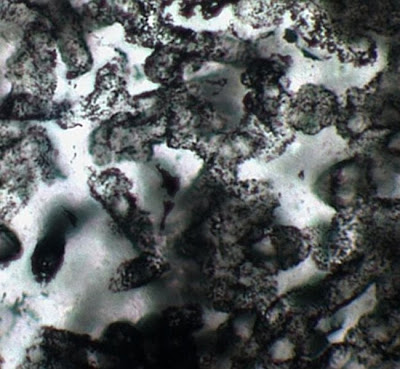 |
| Tubular microfossils found in 3.4-billion-year-old sandstone from WA. |
A team of Australian and British scientists think so - and date the blobby 'microfossils' at 3.4 million years old!
The findings of David Wacey, Matt Kilburn, Martin Saunders, John Cliff and Martin Brasier have been published in the latest issue of Nature Geoscience magazine:
"Sulphur isotope data from early Archaean rocks suggest that microbes with metabolisms based on sulphur existed almost 3.5 billion years ago, leading to suggestions that the earliest microbial ecosystems were sulphur-based. However, morphological evidence for these sulphur-metabolizing bacteria has been elusive. Here we report the presence of microstructures from the 3.4-billion-year-old Strelley Pool Formation in Western Australia that are associated with micrometre-sized pyrite crystals."
The honor of having found the most ancient microfossil has been long been held by J. W. Schopf, a paleobiologist at the University of California, Los Angeles. In 1993, Dr. Schopf reported his discovery of fossils 3.465 billion years old in the Apex chert of the Warrawoona Group in Western Australia, about 20 miles from where the new fossils have been found.
No comments:
Post a Comment